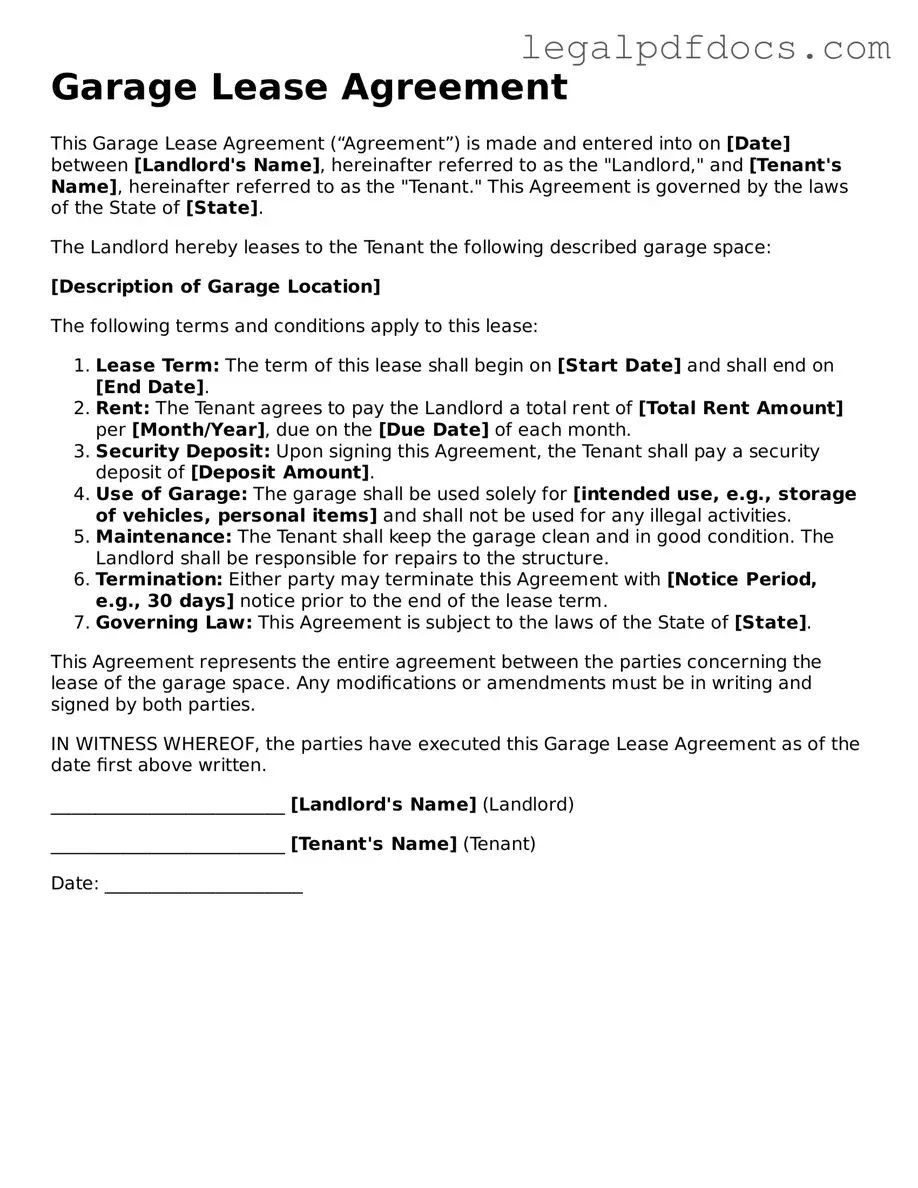Garage Lease Agreement Template
A Garage Lease Agreement is a legal document that outlines the terms and conditions under which one party leases a garage space to another. This agreement serves to protect both the landlord and tenant by clearly defining responsibilities, rental amounts, and duration of the lease. Understanding this form is essential for anyone looking to rent or lease a garage space.
To ensure a smooth leasing experience, consider filling out the Garage Lease Agreement form by clicking the button below.
Open Garage Lease Agreement Editor Here
